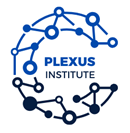The Agile Fluency Project
People who were doing Agile (often Extreme Programming, but also other methods & frameworks) were excited about it. They shared what they learned with others. Those others applied what they learned. Then they got excited too.
They didn’t worry too much about “doing” Agile vs. “being” Agile. They just got on with the work of pleasing customers and bringing value to their business. I loved the days I got to work with those teams.
It seems at some point, someone shared their Agile experience with someone who got excited about it and shared it, but didn’t DO it. So like a copy of a copy, their subsequent sharing lost a bit of fidelity. Hearing about a thing is not the same as doing a thing. Talking about a thing you’ve heard about is not the same as doing it. Knowing-stuff-about is not the same as learning-by-doing. It doesn’t carry the same resonance. It doesn’t build competent, fluent, mastery of the skills.
In the world according to Agile, both the virtuous cycle (doers sharing with doers) and the vicious cycle (talking about-ers sharing with talking about-ers) still continue. The problem is, talk spreads faster than action.
We’re drowning in ideas, opinions, gossip (“Tell me how you failed at X framework”) and complaints about methods. Those who want to learn have less opportunity to experience the real deal. I’ve found when folks talk about big ideas little happens. We can get excited about them, but without having the opportunity to put them into practice, we’re left deflated. It’s like a sugar high. It feels good in the moment, but later we feel the crash. We’re disappointed that we can’t apply the ideas and get the promised results.
Case studies and experience reports are a sought after item. Agile Alliance sponsors an Experience Reports Initiative. People are hungry for real stories about what works. People still want to hear from the successful doers. People still want to avoid pitfalls. Yet, in many companies, the truly competent doing is still small in comparison to the talk. Effective practice is in danger of being overwhelmed by opinion. In other words, Agile is becoming a way of achieving only, “Well, my job doesn’t suck as much as it used to.” If you’ve got that where you work, I’m sorry to tell you that’s “Agile redefined.” That’s “Agile poorly done.” That’s “Agile without the benefits of Agile.”
So what to do? To achieve Agile done well and the ensure the best jobs ever, we need to feed the virtuous cycle and starve the vicious cycle. We need teams that seek greatness. We need coaches, mentors, and leaders who invest in their teams and each other. We need more doers demonstrating the path to excellence. We need doers working with doers, like in code retreats, hack-a-thons, and incubators. We need want-to-be doers seeking out the experienced folks who demonstrate “best job ever.”
Are you a doer? Congratulations! Please share your story with others who want to become doers too. This is how we get to see the Agile Fluency® Model in action.
The road from where we’ve been to where we’re going emerges from the actions (and stories about our actions) we share with others. If you’re doing Agile well, congratulations! and thank you! Please share your story. Agile Alliance’s Experience Report Initiative is one good place for sharing. Your local user group/meetup is another.
For more about the model, join us at Agile Fluency Project.
This post was contributed by Previously publishedat LinkedIn
About the Presenter Diana Larsen

As co-founder and chief connector, Diana Larsen collaborates in leadership of the Agile Fluency® Project. Diana co-authored the books Agile Retrospectives: Making Good Teams Great; Liftoff: Start and Sustain Successful Agile Teams; Five Rules for Accelerated Learning; and the seminal whitepaper and eBook “Agile Fluency Model: A Brief Guide to Success with Agile.” Through the Agile Fluency Project’s programs for supporting and mentoring leaders, coaches, and consultants, Diana shares the wisdom she’s gained in over 30 years of working with leaders, teams, and organizations. She delivers keynote talks and workshops at conferences around the world.
What is Agile Fluency? Fluency is routine practice mastery that persists under stress. Anyone can follow a set of practices in a classroom setting. A team’s true fluency is revealed under pressure and in the face of distraction. In this Catalyzing Conversation Diana Larsen, a leading voice in the agile community and co-founder of the Agile Fluency Project, she will share how this initiative addresses the deeper considerations of an agile team can be effective in complex adaptive systems.
